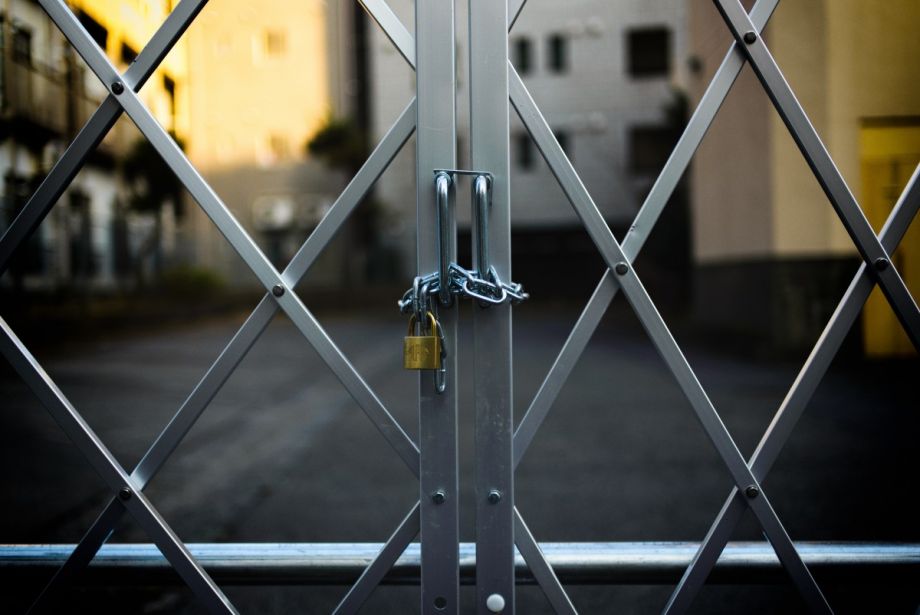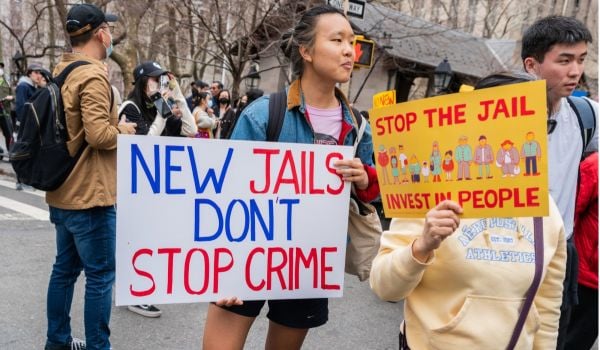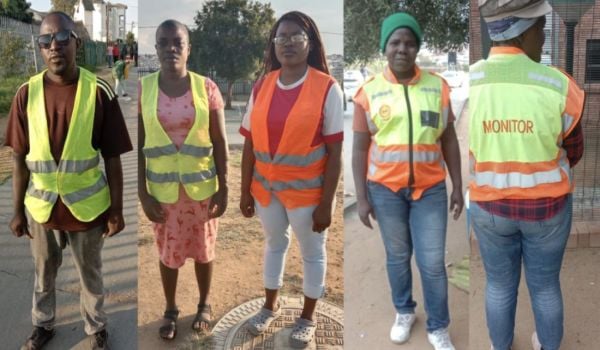In 2015, Charleston County, South Carolina, agreed not to hold people pre-trial for marijuana arrests. It was one of five charges a then newly-formed criminal justice council identified as crucial for cutting its jail population.
This — along with other decisions the council made — worked. Between 2014-2020, the county cut its jail population by 38 percent, or around 400 people. The number of people cycling repeatedly through the jail decreased by 63 percent. Because of these reductions, the proposed 2022 Charleston County budget was able to eliminate 40 open positions for jail deputies.
In 2015, the county pulled representatives from many of its agencies and non-profits together and asked them to agree on strategies to reduce the jail population. The coalition, called the “Charleston County Criminal Justice Coordinating Council,” or CJCC, consists of the county’s courts, homeless shelter, the ACLU, three police departments and a sheriff’s office, probation office as well as community representatives, was funded through a series of “Safety and Justice Challenge” grants from the MacArthur Foundation.
Charleston is one of over four dozen counties and cities that have received grants through the program. The foundation says it has disbursed over $246 million dollars of these funds to cities, counties and states. Grantees can receive additional rounds of funding if they show reduced jail populations without any impact to public safety. The temporary funding is designed to create pilot programs in otherwise reluctant jurisdictions,with the goal that successful programs will persist through county or city funding. Charleston County has received three more grants since its initial round of funding, totaling $6.4 million dollars, to continue the work.
The correlation between public safety and jail reduction is an attempt to allay critics who have associated the two, and the MacArthur Foundation’s data show that most of its participating jurisdictions saw crime rates either decrease or remain the same as their jail populations declined between 2016-2019.
In 2020, many counties took steps to aggressively reduce their jail populations to reduce the spread of Covid-19, which some blamed for a rise in homicides and gun violence across the country But data from Safety and Justice and JFA Institute suggests otherwise, as jail populations were already decreasing prior to 2020 without a rise in crime, and most other types of crimes went down during the pandemic, suggesting says spikes in violence that coincided with pandemic jail reduction are unrelated. “The surge in violence suggests factors related to the pandemic, not the efforts being made to reduce jail admissions,” says Laurie Garduque, who directs the Safety and Justice project.
The Safety and Justice grants specifically target jail and not prison populations. Prisons typically hold people who have been convicted of crimes and who are serving longer sentences, whereas jails hold people awaiting trial and or those serving short sentences. According to Garduque, the grants are targeted at jails because “the misuse and overuse of jails has not received the same amount of attention” as prisons.
When the request for proposals went live in 2015, the foundation received 191 applications from jurisdictions in 45 different states. Many cities have used the money to hire clinical social workers, housing specialists and legal aid to redirect people from jail to other services. In some cases, non-police intervention teams have been hired to reduce contact with the criminal justice system altogether. Common strategies across grantees include issuing citations rather than jailing people pre-trial.
Garduque noted that while reductions in jail populations were consistent among grantees, there were also increases in racial disparities in jail populations as more low-level arrests were diverted. “What happens over time as you remove the people who are charged with low-level, non-violence, offenses, is that the people who are booked into jail have the more serious charges,” Garduque says. “And that more often than not, those are people of color.”
In many cases funding has gone to things that may seem technocratic and mundane, including administrative hires and improved data-sharing between agencies. In Charleston, much of the money went to build bureaucratic infrastructure that lets disparate agencies share data and develop consensus on how to keep people out of jail.
The Charleston council agreed to reduce charges for five low-level crimes, improve assessments for those experiencing homelessness and mental illness and specifically focus on people who were constantly cycling through the jails — the council calls them “familiar faces” — to redirect them to counseling.
The Charleston council began by compiling data on who was entering its jail, finding that many of the charges were low-level, with the highest number of charges for marijuana possession. The council, which includes the Charleston police department, agreed not to hold people pre-trial for marijuana arrests but to issue tickets instead — criminal charges remain and the person is given a court date. Marijuana arrests were one of five charges that were targeted by the council because they brought in a disproportionate amount of Black community members. The vast majority of people who were arrested but released pre-trial were not re-arrested.
“It’s astounding to see how much consensus there is,” says Kristy Danford, project director at the council. “Our role as staff is to convene the parties, present the information, facilitate the discussion, but it’s their call.”
“I don’t think it requires much discussion other than why we didn’t think of it sooner,” says Captain Jason Bruder with the Charleston police department, who also sits on the council. Bruder says prior to the CJCC, the county’s agencies were operating in silos. He says the chiefs of the county’s four major law enforcement agencies, comprised of three police departments and a sheriff’s office, were happy with the council’s plan to downgrade charges to citations because it saves their officers time on booking people into jail.
Charleston’s funding went to more than just council staff. Some money went to pre-trial assessments to determine the best way to divert people from jail and clinical social workers for people who need medication or housing. Three new positions in centralized bond court were added and public defenders were hired to work arraignments; defendants previously didn’t have representation until trial due to understaffing. The grants funded infrastructure to automate the discovery process for defense attorneys, moving evidence in a more timely way. The result was that judges had a lower reliance on financial bonds for lower-level charges.
Danford says one of the biggest hefts was organizing data. “That process was so daunting and exhausting, the data systems didn’t talk to each other,” Danford says.
“If you’re looking at how your criminal justice system functions, and you have questions, without the data, you just have anecdote,” she says.
Other counties across the country used Safety and Justice grant money to improve existing diversion programs.
In Los Angeles County, Safety and Justice Grant money has been used to shore up a pre-existing mental health diversion program. The county’s struggles with mental ill arrestees rose to national prominence when the county shut down a plan to build a “mental health jail” and a subsequent plan to build a state-run mental health hospital in 2019, opting instead for community-based services after protest.
A 2018 California state law allows people with mental health problems who are arrested to be diverted to treatment rather than face arraignment. To qualify under the statute, a person who is arrested must be identified as having a mental health disorder, a program for their disorder must be identified and the arrestee has to be monitored by the county. Los Angeles county received two rounds of Safety and Justice funding totaling $2.2 million, which went to licensed clinical social workers placed at each criminal court in the county to conduct rapid assessments.
“We quickly determine whether a justice involved person is qualified for diversion under the mental health statute, and if they are, we then connect them to appropriate services,” says Nick Stewart-Oaten, an attorney with the LA public defender’s office, which is leading the initiative. The assessments also help convince prosecutors and judges that the arrestee should be diverted under the statute. In some cases the money is also used to pay for food, housing and clothing for people who are diverted into treatment, Stewart-Oaten says.
Stewart-Oaten says the program has assessed more than 1,500 people and has diverted about 250 people. Stewart-Oaten says the grant money should last them until 2023, at which point the county’s Alternatives to Incarceration department has signaled that it could pick up funding.
The $2.2 million in funding is a drop in the bucket of the county’s $36.2 billion budget. But Stewart-Oaten says the benefit of the Safety and Justice grant is that it provided a blueprint and a catalyst to coordinate jail reduction.
“Because the grant came from a respected outside group, it gave advocates an extra platform from which to push for the prioritization of mental health diversion,” he says.
The purpose of the Safety and Justice grants, Garduque says, is that it allows local governments to experiment in ways that public funds don’t always permit. The hope is that pilot projects will persuade local governments to fund the projects long-term.
“Our funding was not geared to supplant what city and county funds arguably should be used for,” Garduque says. “What we found in many jurisdictions is they can’t use existing funds to innovate. They have to prove efficacy.”
But the approach could leave smaller jurisdictions in a more precarious place. While Charleston County has signalled satisfaction with its justice council, no long-term funding has been set in stone. Los Angeles County, on the other hand, might be more likely to continue funding its program because of the small overall cost in relation to the county’s budget.
There is also the reality that in some cases, social workers are being asked to divert arrestees to resources that do not exist. In Los Angeles county, 20 percent of people who qualify for diversion under the mental health statute were still held pre-trial because the defender’s office was not able to find services quickly enough for the court, an ongoing problem as the county struggles to adopt a “care first, jails last” approach. In Charleston, many who cycle through the jail system are experiencing homelessness, but a lack of affordable housing as well as temporary support beds for those also experiencing serious mental illness has led many to remain in a cycle of rearrest.
And the Safety and Justice Challenge approach may not satisfy advocates who want to decrease reliance on the criminal justice system altogether — it focuses exclusively on decreasing pre-trial detention, not on decreasing arrests. Some jurisdictions have used the grants to transition people to electronic monitoring, an extension of the carceral system. In LA county, over a third of mentally ill people receive treatment only after interactions with law enforcement.
The counties that have signalled approval of the program have pointed to the impact on budgets once arrests decrease. Garduque hopes this is not the only takeaway. “We have been working with jails not to think about this as cost benefit, but what does it mean to have a more humane, more just, more equitable system,” Garduque says, “and sometimes that’s hard to monetize.”

Roshan Abraham is Next City's housing correspondent and a former Equitable Cities fellow. He is based in Queens. Follow him on Twitter at @roshantone.












